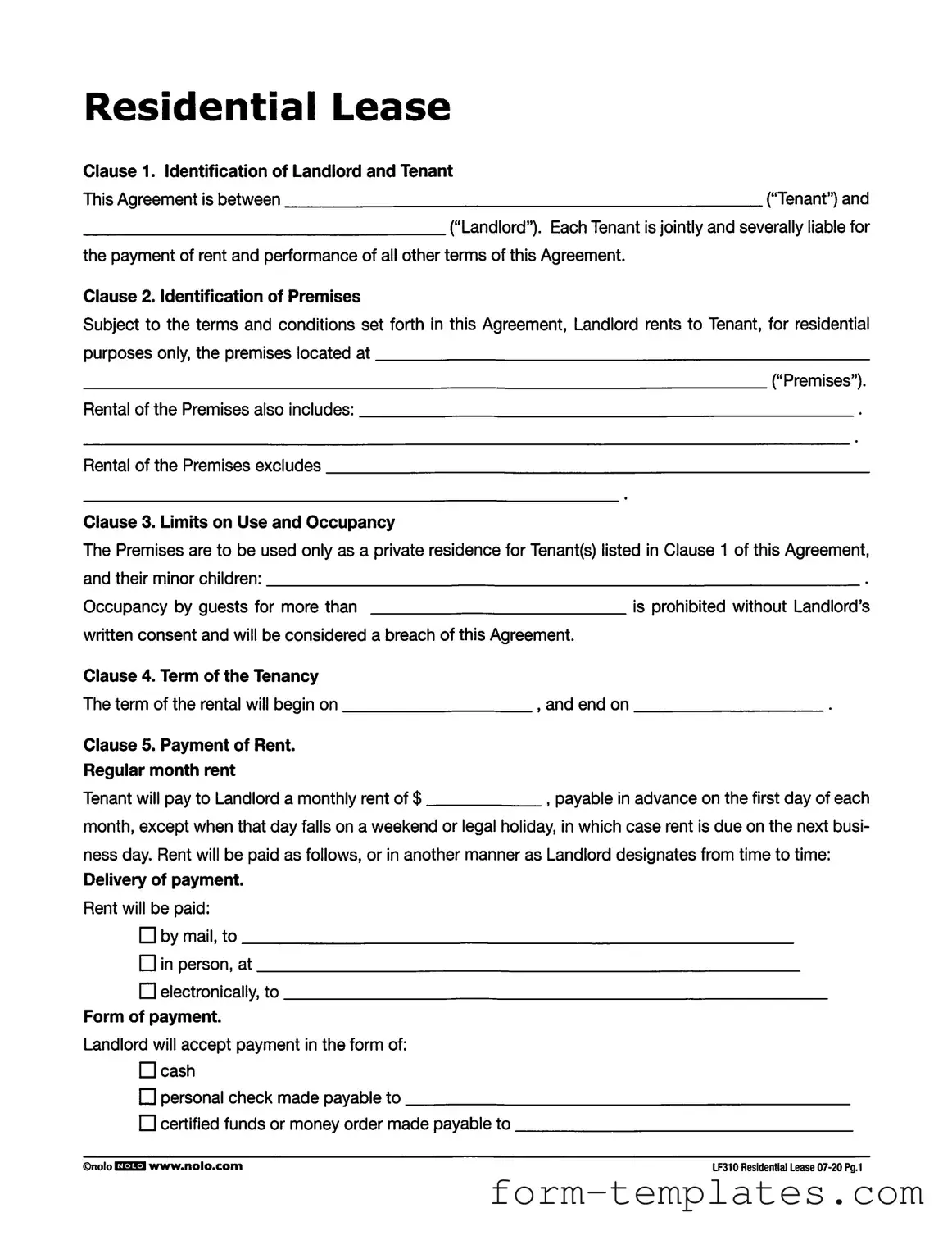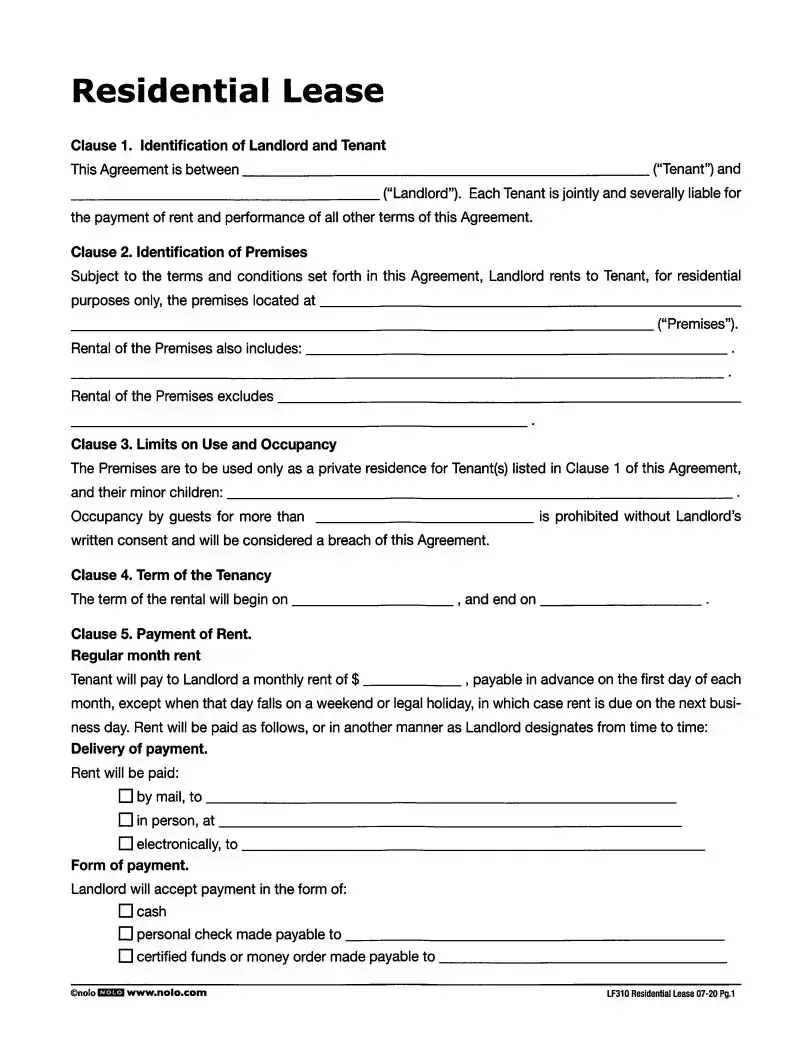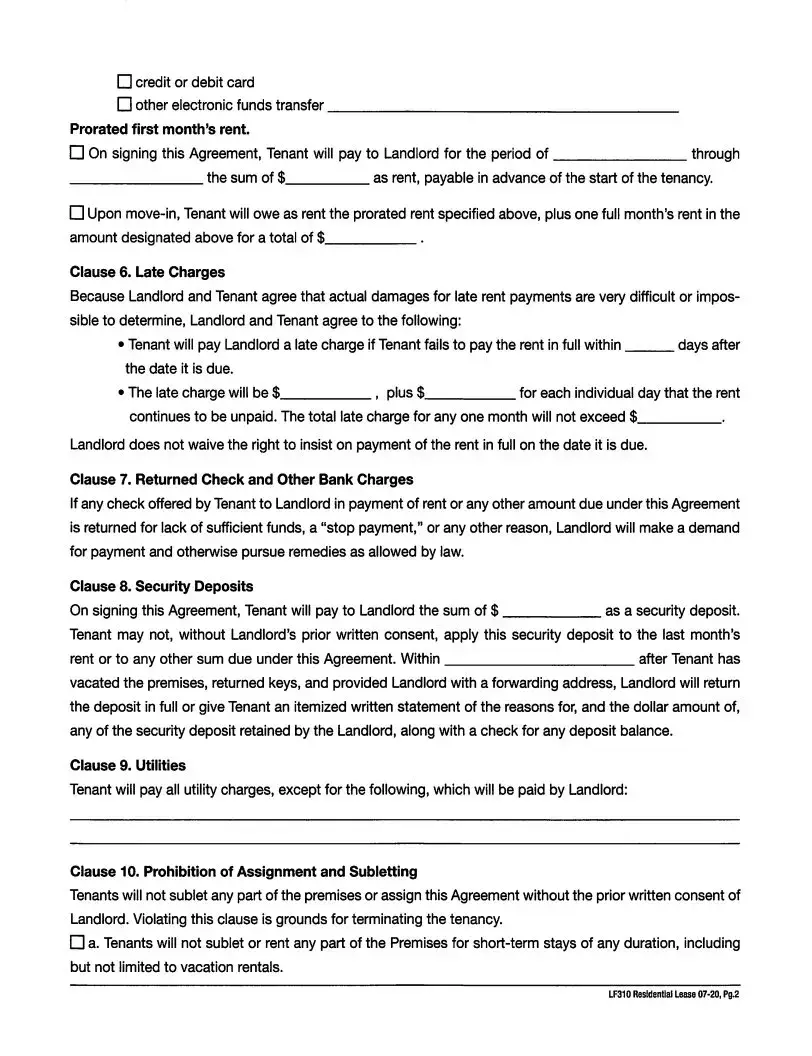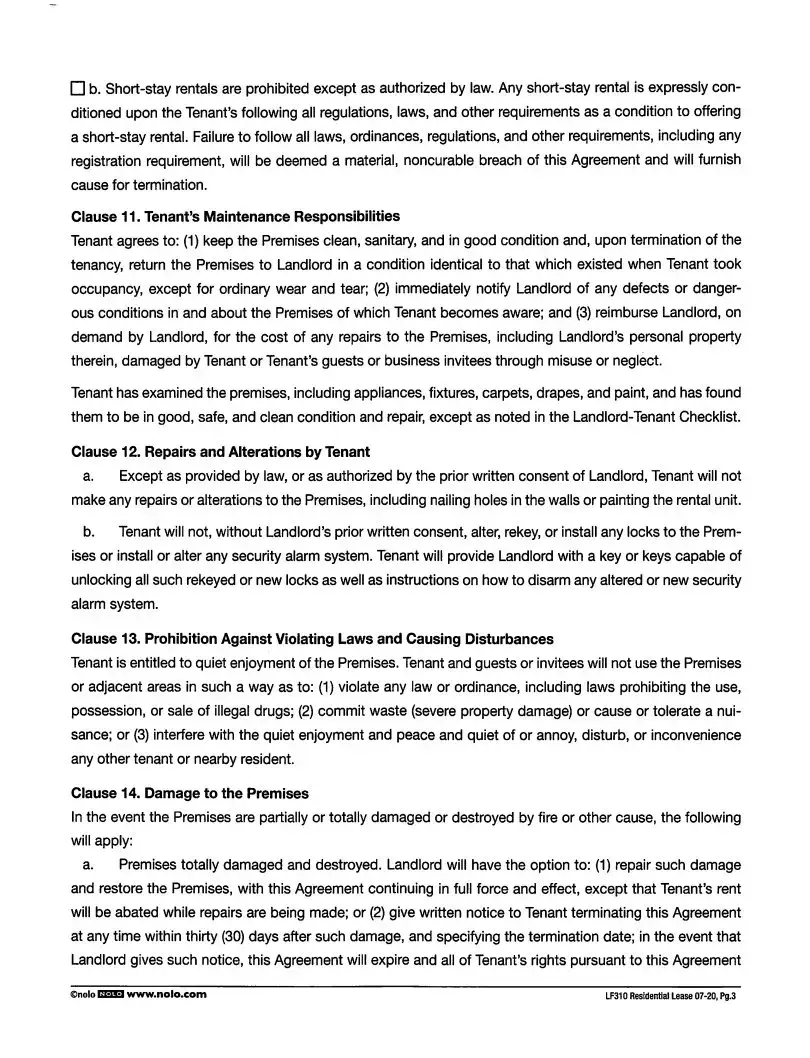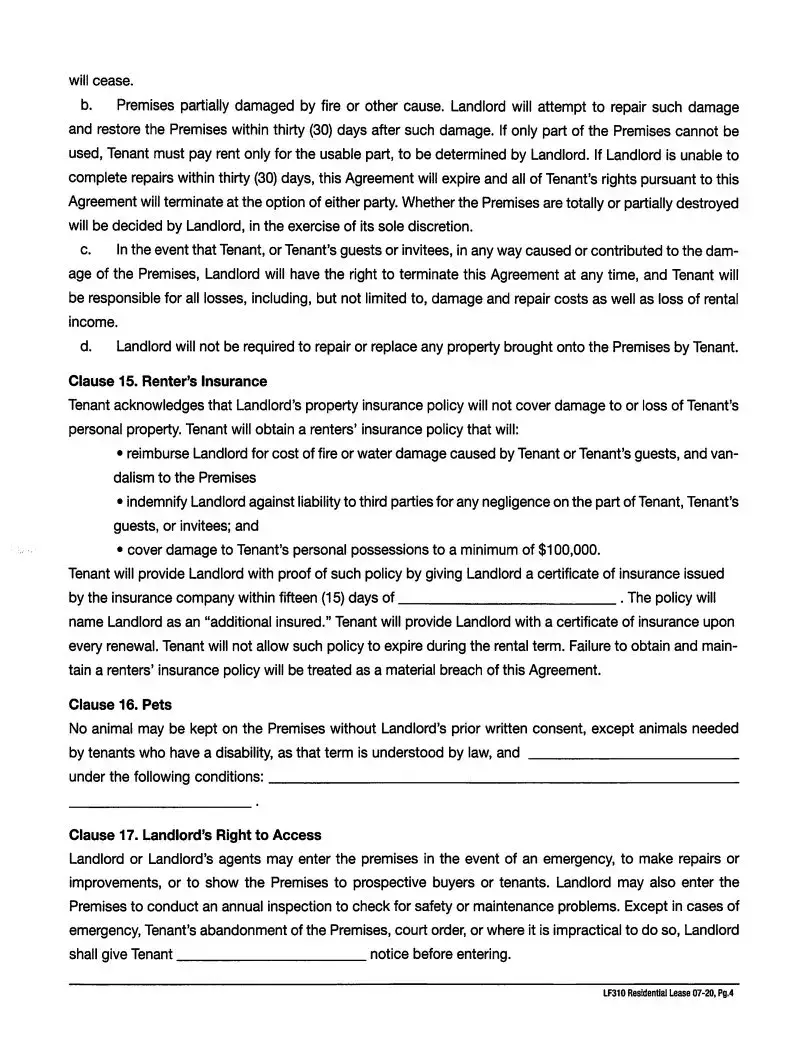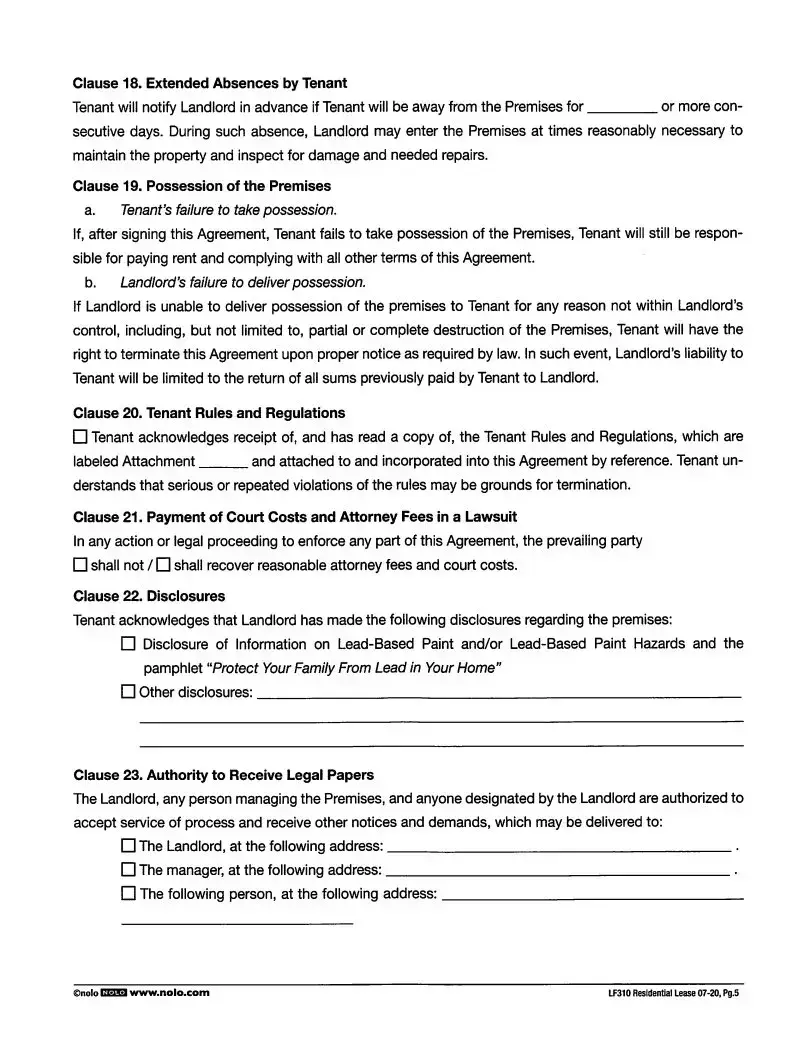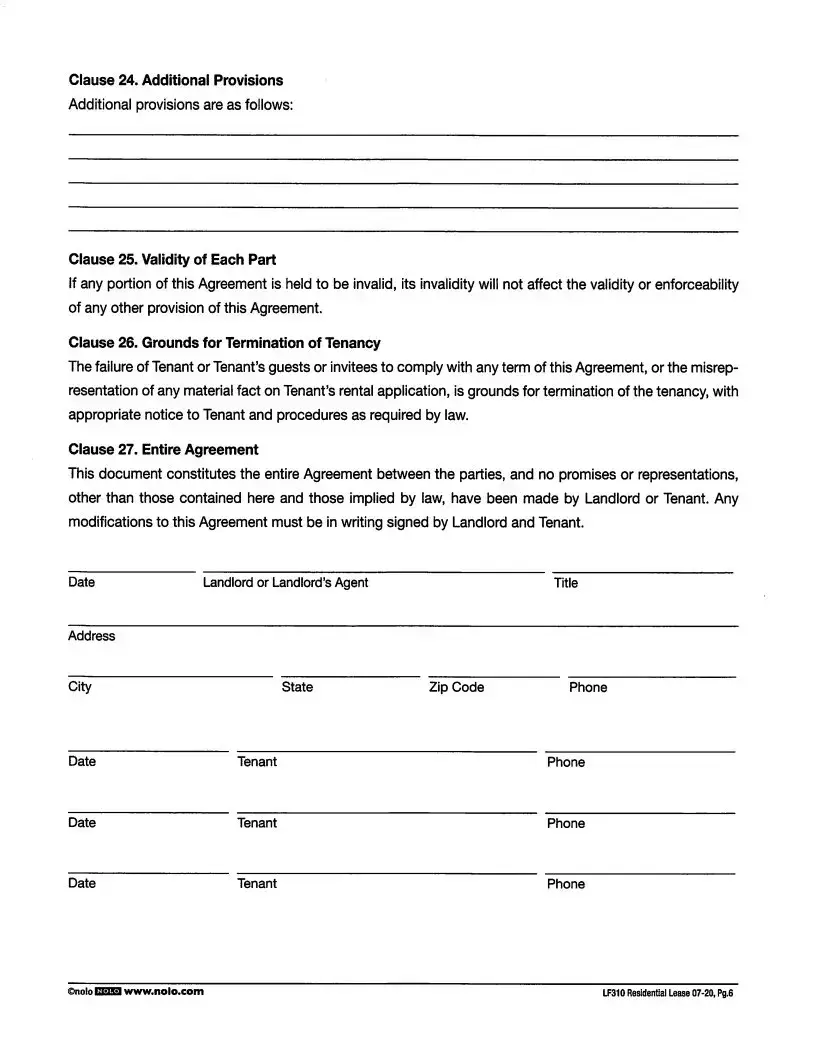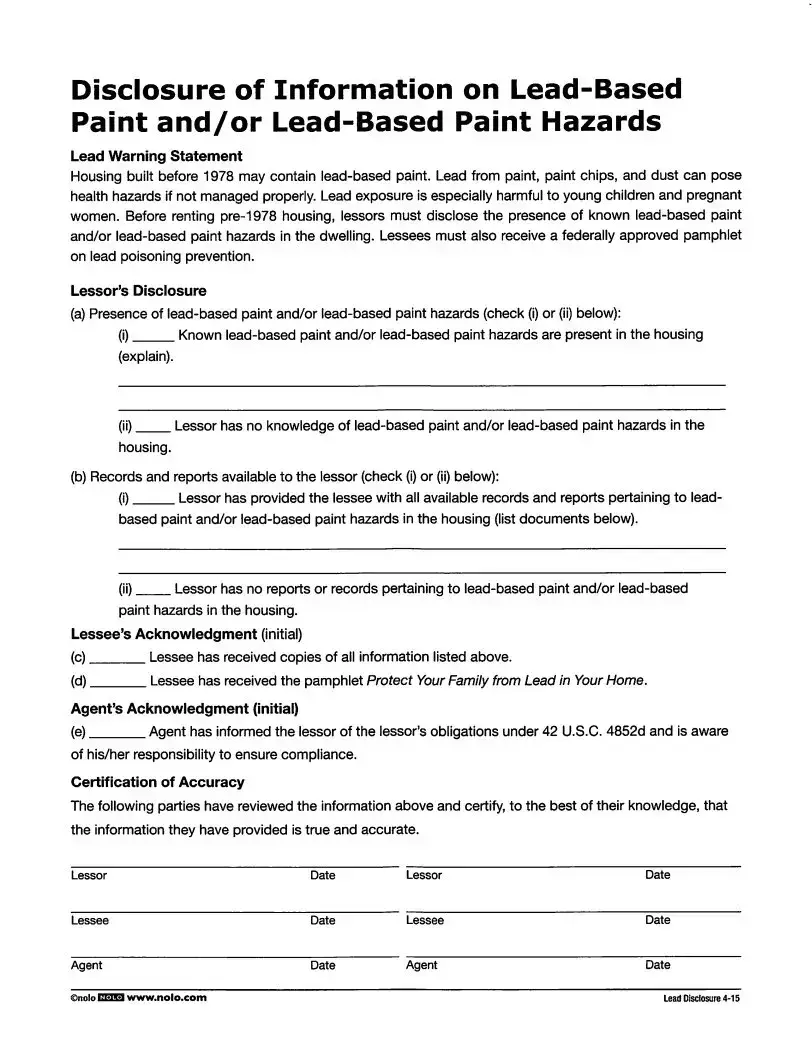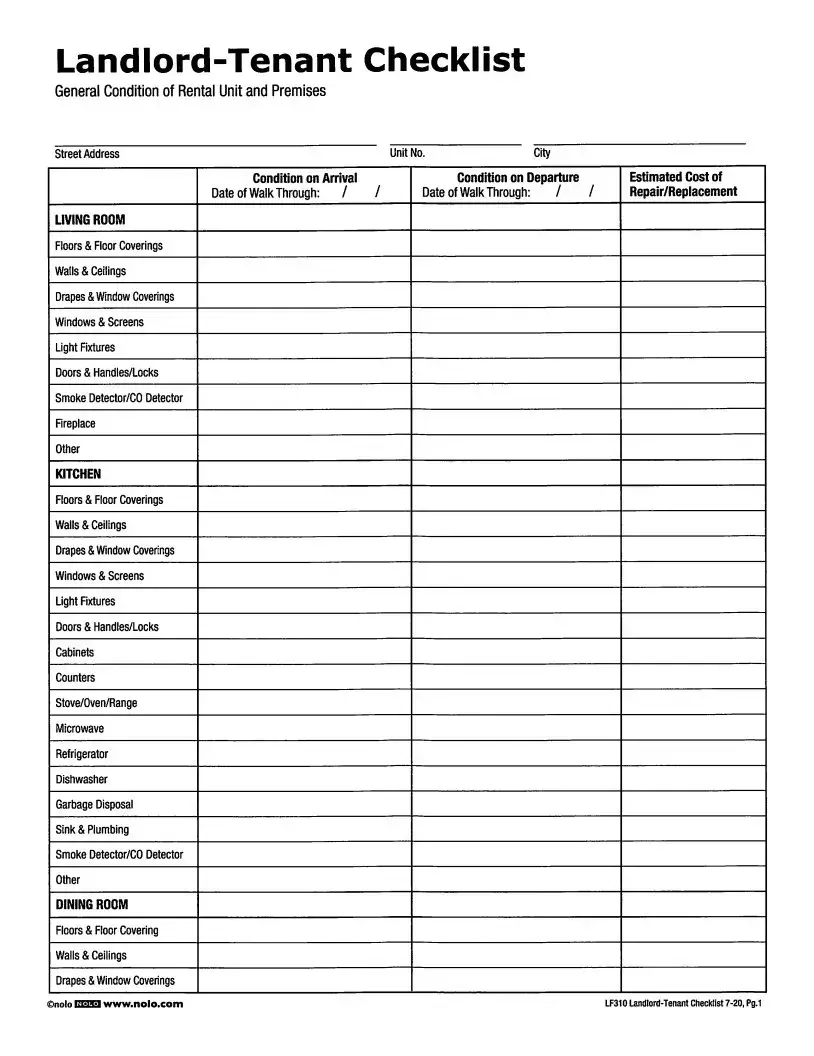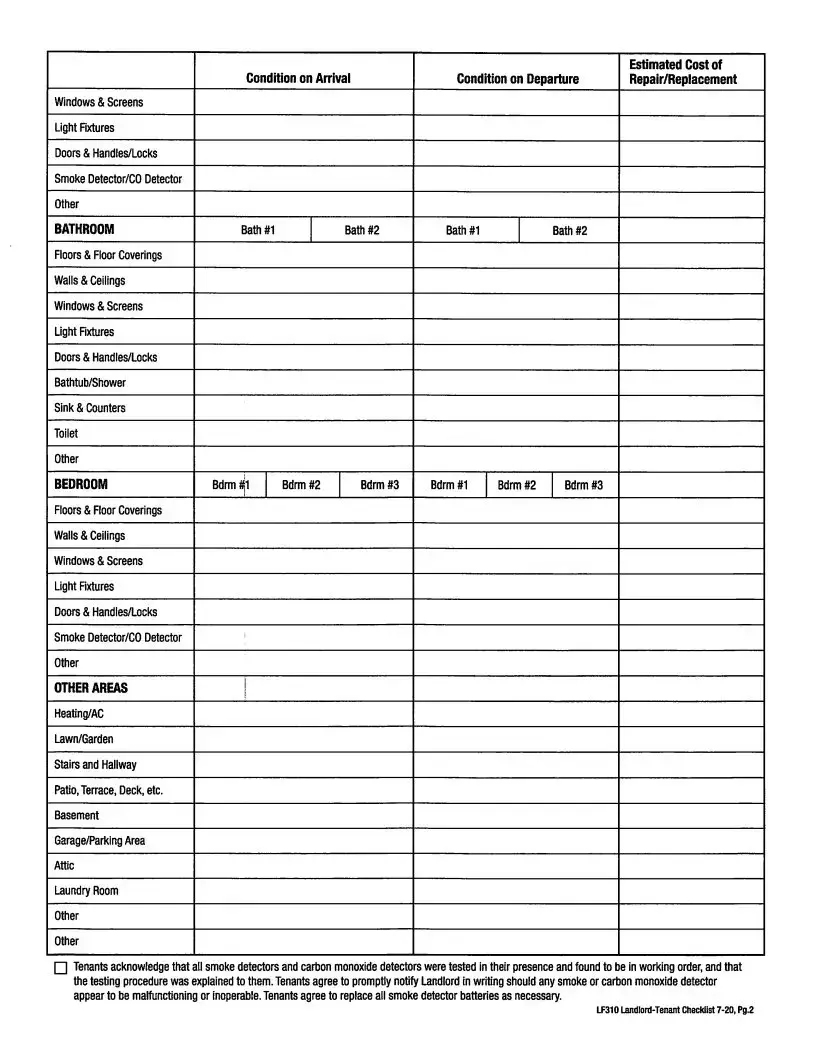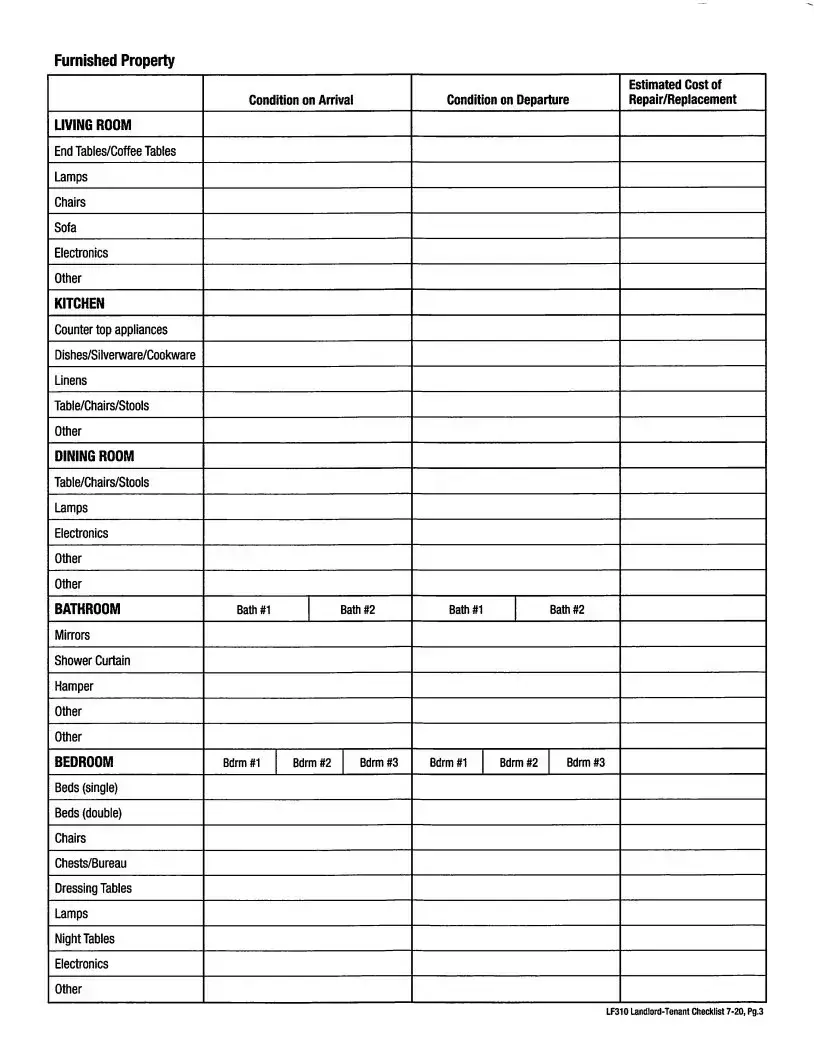The Lf310 Residential Lease form is a legal document that outlines the agreement between a landlord and tenant for renting a residential property. It includes essential details such as the identification of the parties, the premises being rented, payment terms, and rules regarding occupancy and use of the property.
Who are the parties involved in the lease?
The lease identifies two main parties: the landlord and the tenant. Each tenant listed in the agreement is jointly responsible for paying rent and fulfilling all terms of the lease. This means that if one tenant fails to pay rent, the other tenants can be held accountable.
What are the terms of occupancy?
The premises can only be used as a private residence for the tenants named in the lease and their minor children. Guests may stay for a limited time, but any extended occupancy without the landlord's written consent is a violation of the lease.
How is rent paid?
Rent is due monthly on the first day of each month. If that day falls on a weekend or holiday, rent must be paid on the next business day. The lease specifies how rent can be paid, such as by mail, in person, or electronically. Acceptable forms of payment include cash, checks, certified funds, and electronic transfers.
What happens if rent is paid late?
If rent is not paid within a specified number of days after it is due, a late charge will apply. The lease outlines the amount of the late fee and any additional daily charges for continued non-payment. The total late charge for a month cannot exceed a certain limit.
What is the security deposit?
Upon signing the lease, the tenant must pay a security deposit. This deposit cannot be used for the last month’s rent without the landlord's written consent. After the tenant vacates the premises, the landlord must return the deposit within a specified time frame or provide an itemized statement detailing any deductions.
Who is responsible for utilities?
The tenant is generally responsible for all utility charges unless otherwise stated in the lease. The lease may specify which utilities, if any, will be paid by the landlord.
Can tenants sublet the premises?
What are the consequences of violating the lease?
Violating any terms of the lease, such as unauthorized guests or subletting, can lead to serious consequences, including potential eviction. The landlord has the right to enforce the lease terms to protect their property and interests.
The lease should provide contact information for the landlord, including how to reach them for maintenance issues or any other concerns. Tenants should keep this information handy for easy access.
